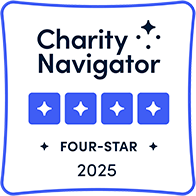Sierra Leone emerged from more than ten years of a brutal civil war, from 1996-1999 that received international attention for atrocities, such as amputations, forced recruitment of child soldiers, and widespread sexual violence. An estimated 75,000 people were killed, while as many as two million were displaced. All sides of the conflict, including the Revolutionary United Front (RUF), the Armed Forces Revolutionary Council (AFRC,) and the Civilian Defense Forces (CDF), were responsible for committing human rights abuses. The conflict was also characterized by cross-border involvement from Liberia, as well as the struggle for control of diamonds and other economic resources.
The government of Sierra Leone and the RUF signed a peace agreement in Lomé, Togo in 1999. The Lomé Peace Agreement included amnesty for all parties to the war and an agreement to establish a Truth and Reconciliation Commission (TRC).
The Sierra Leone Parliament passed the Truth and Reconciliation Commission Act in 2000 to create the TRC, which was mandated to develop an impartial historical record of the conflict, address impunity, respond to the needs of the victims, promote healing and reconciliation, and prevent the reoccurrence of violence. The TRC finished its work in the spring of 2004, and released its report and recommendations on November 12, 2005.
In August 2000, in response to a request from Sierra Leone President Kabbah, the UN Security Council passed Resolution 1315, mandating the creation of the Special Court for Sierra Leone (SCSL) to prosecute "those persons who bear the greatest responsibility for the commission of violations of international humanitarian law" perpetrated between November 30, 1996 and 1999. On January 16, 2002, after over a year of negotiations, the UN and the government of Sierra Leone signed an agreement creating the legal framework for the SCSL, an independent court using both international and Sierra Leonean law, judges, and prosecutors. Trials began on June 3, 2004. Former Liberian President Charles Taylor was tried by a special chamber of the SCSL in The Hague.
The Advocates for Human Rights sent a delegation to Sierra Leone in May 2004 to monitor the transitional justice process in that country. In addition to documenting the human rights abuses committed during the conflict, the team examined Sierra Leone’s two primary transitional justice mechanisms, the TRC and SCSL.
In August 2000, in response to a request from Sierra Leone President Kabbah, the UN Security Council passed Resolution 1315 mandating the creation of the Special Court for Sierra Leone to prosecute "those persons who bear the greatest responsibility for the commission of violations of international humanitarian law" perpetrated between November 30, 1996 and 1999. On January 16, 2002, after over a year of negotiations, the U.N. and the government of Sierra Leone signed an agreement that created the legal framework for the SCSL, an independent court using both international and Sierra Leonean law, judges, and prosecutors. Trials began on 3 June 2004 and have concluded in the AFRC and CDF cases. A decision of the Trial Chamber in the RUF case is expected in late 2008. Former Liberian President Charles Taylor is being tried by a special chamber of the SCSL in The Hague.
The Advocates' team spent two weeks conducting on-site investigations and more than 40 fact-finding interviews in the capital city of Freetown and in the Bo, Kono, and Kenema Districts. The team interviewed representatives of the U.N. Mission in Sierra Leone (UNAMSIL), TRC commissioners and staff, government officials, victims, witnesses, media, police, lawyers, civil society organizations, a member of Parliament, and the Chief Justice of the Supreme Court of Sierra Leone. The team also met with staff in all of the organs of the Special Court for Sierra Leone (



